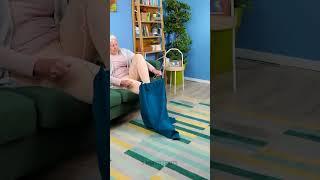
Dan's Top 5 Guitar Effect Pedal Hacks, Tips and Tricks
Комментарии:

These were all worthwhile tricks. Thank you for sharing. I'm enjoying your solo content. I like to hear you get into the electronics aspects of things.
Ответить
Good stuff Dan!
Ответить
Frickin' heck! The Boss reverse plate is so simple I feel like Dwight Shrute for not knowing it!!!
Ответить
I use Deoxit D5 for cleaning everything... it's brilliant but so expensive. Is servisoil superten really comparable ?
Ответить
The stereo to mono in series is a great fix, would have rescued me at my last gig! I run in stereo but had ground loop issues and went down to one amp instead of stereo then lost half my delay. Next time I’ll know what to do, with one patch cable, easy peasy 👍🙏
Ответить
Doesn't the last mod assume that the pedal actually has TRS capable sockets?
Ответить
Batteries always leak. Get rif of them and replace them with a power supply unit.
Ответить
I always just licked the battery terminals XD
Ответить
Dan you absolute beauty! Love the TRS hack thanks!
Ответить
unfortunately, the battery check hack seems not work in mxr pedals 😔
Ответить
OMG that battery tip is the best thing I've heard all year.
Ответить
My hack for Boss pedals is to use a heat gun (on low) and putty knife to gently pull the rubber base off. Most of the adhesive will stick to the rubber if you scrape from the pedal side. Take the removed base and place it on wax paper, then put it in a zip-loc bag for storage. If you want to sell the pedal, just re-heat the base plate so its hot, the press on the rubber base.
Ответить
Hi Dan, For the stereo hack, if you just accidentally put only one mono jack into "output 2". Output 1 signal will short circuit to the ground, isn't it?
Ответить
Dan the Man 👍🏻
Ответить
Tip #2 changed my life!
Ответить
lol i like how you just through a shotgun mic in front of that tiny yamaha amp
Ответить
Flipping the backplate! Brilliant! Great explanation of the stereo hack as well. Thanks Dan. Good stuff.
Ответить
Very cool hacks, Dan! For "Tip 1 - TRS Battery Check", I stumbled into just half inserting a regular 1/4" guitar cable into an effects input jack, and measuring the battery that way. Saves on having to have extra TRS hardware.
Ответить
Awesome! Very usefull tips! Thanks, Dan!!
Ответить
Can you do that parallel to series delay hack that your doing with the eventide with a boss DD7 or dd8 without destroying your pedal ???
Ответить
can you please do a complete video on the WetterBox and Timefactor?
Ответить
Will the same pot cleaning method work for the controls on my amp?
Ответить
No more 9v batteries! I dont even use 9v batterys to power my active pickups anymore. I use a $16 on Amazon Drok Dc converter that can put out .5v - 30v. Its connected to the ring connection on the input of the first pedal in my signal chain which travels through a TRS 1/4" cable to the ring connection in my guitar jack where the hot connections for the pickups are soldered. This method work great and it diesnt interfere with passive pickups. I use the same TRS cable for my passive and active pickups. I just turn off the Drok if I dont need power. But technically you could leave it on without issues even when using passive pickups since passive pups use mono Jack's that dont even have a ring connection. Plus the power is now consistent and I can vary the voltage on the fly. I actually much prefer 12-18v for my active Fishman fluence modern 7's which can be run on 9-18v. Fishman says they dont sound different from 9v-18v due to design but I absolutely notice the tone I get is much more consistent and has slightly more headroom with 18v then 9v. Plus with 9v batteries from one day to the next my tone would change. One day the fishmans would sound better than any pickup I'd ever heard and then the next day I couldn't get a good tone to save my life. Ever since I ditched the 9v batterys the fishmans have sounded good and consistent every single time I've picked them up to play each day. I highly encourage any musician reading this to ditch 9v batterys completely. Even in pedals where you want a drained battery for its tone shaping ability (known as the sag control on some power supplys) you can just use the drok which again is only $16 on Amazon to power your pedal at any voltage you want. It takes anywhere from 5.5v -30v dc at the input and can convert it to 0.5v - 30v dc at the output. Its basically a boost buck converter.
Ответить
Great hacks, thank you. Is it more accurate to test batteries with a load connected, I’ve seen battery tests that show 9 volts, however under load they drop dramatically, seen then drop as low as 2 volts. Will your trs hack work if a resister is added as a load ? Cheers
Ответить
Some nice tips here! Great vid. What fuzz is that? A shaftsbury duo fuzz? A univox?
Ответить
the TRS conection can be done on the strymon timeline and big sky?
Ответить
I've watched this a few times and the only one I understand is the base-flipping trick.
That TRS thing made no sense to a numbskull like me. I just don't see why a Y-cable won't work. It seems to work ok when I use it (Dual TS> TRS)

The last tip is genius!
Ответить
Is that Laphroaig I spy on the drinks shelf?
Ответить
What about building your own pedal using a Raspberry Pi IV + a Guitar Pedal Hat + Pure Data then by suitable programming you create any effect you want.
Ответить
Any body try the stereo trick with a DL4???
Ответить
Can u do the patch bay delay trick with a fender reflecting pool delay/Reverb pedal or even the pinwheel rotary speaker emulator pedal without hurting the pedals causing catastrophe?
Ответить
You’re the man Dan! Thank you 🤟😎🍻
Ответить
Great hacks. I love this format of explaining things efficiently versus the regular videos you do
Ответить
More videos like this, please.
Ответить
How much of the cleaner can you use for the pot? it seems there was a leak of this inside and then under the pedal...
Ответить
Amazing... thank you for the knowledge givin.
Ответить
i thought the sound will get better after flipping boss back cover
Ответить
DAN is the MacGyver of Rock.
Ответить
I just rip the rubber off the boss pedals then flip the plate
Ответить
Thanks. Well done. Finally someone got this too, with flipping the bottom plate over. I've been doing this for at least 15 years now. I don't know why manufacturers takes "height" for this by making the bottom plate fit the other way around, and doing the pedal a tad taller, so the rubber feet will not touch anything when facing inwards/upwards. Very few I know of are using one sole pedal anymore on the floor. I started with WAH pedals since there are always ample room for it to be flipped. Then the more straight surface, that results from it makes the engaging and disengaging of the wah pedals more smooth and even since there's "early resistance" to the toe pressing. I do hate leaving wah pedals on any pedalboard as well if it is slanted. They have to reside on the floor next to it, because when engaging them, you just flex the board underneath and it will not turn on. It takes ages for it to turn on, and using excessive toe force.
The number of pedals that have "flippable" bottom plates are far and in between. A third of all Boss pedals, Strymons none (absolutely) etc. The best thing is, when you later on flip the bottom plate over again, the rubber feet and labels are as new should you sell the pedal. You don't forget where you put those rubber feet ... :-)
And who cares about the residue from the velcro strips inside? Frankly, since that surface is not polished the velcro sticks way better to that side of the bottom plate. I think ALL pedal manufacturers should make them pedals to facilitate for bottom plate flip over. They have to get rid of these "Hammond" boxes as they're called. One can get washers and buy longer screws, to move the bottom plate up from keeping it from touching the circuitry, but then that bottom plate may leave a gap open to the intestants of the pedal which is bad. Defeats its purpose then...

Dan, I’d love to know how that delay is set… supergroovy.
Ответить
hi Dan, I have been using double sided vel-cro 3/4¨ from Harbor freight. I remove the screws, punch a small hole in the vel-cro and replace the screws threw the vel.cro back in the pedal. eliminating the sticky crap. A little time consuming but it works well for me.
Ответить
This is amazing. Thank you.
Ответить
I've been searching for an answer to a question about pedals and TRS jacks. Basically, as someone not new to the world of DIY/custom hardware building, soldering & electro-mechanical design—but only recently delving into the functionality of audio-processing hardware, circuits+signal chains & DIY synth/EFX modding:
———————————————
Basically I'm having trouble confirming the viability of converting a standard Mono-I/O effect pedal into Stereo I/O processing—*either by way of swapping both mono-TS jacks for TRS stereo one, OR drilling the housing and adding another pair of TS—BUT, somehow apply processing to both channels (maybe by designing a simple mini breakout board that pans each to R+L, plus any protection/gain management for Line Levels, dip switches/toggles, etc.)?
Assuming I didn't care about ADDING any additional EFX-based stereo-field (like ping-pong, stereo chorus, pan-modulation/phasing), only maintaining SOME of what's input; would the only way to accomplish this be buying 2 of the same pedal/kit, re-housing both together & sharing power/switching, and hard-pan each delay line onto just the L+R I/O's? Or am I just too-far-gone & stubborn... 🫠

does anyone knows if the TRS stereo mod also works for the input? it should, right?
Ответить
Just peel the rubber off.
Ответить
Olha um comentário em Português. Que coisa maravilhosa. Informações de milhões. Obrigado e parabéns pelo trabalho.
Ответить
Awesome video! There at least used to be Y cables that went from TRS on one end to 2 different ends: 1 TS and the other RS that may eliminate the need for soldering in the last hack.
Ответить










![Miserable Ends [Hikam 228] | Dr. Mufti Abdur-Rahman ibn Yusuf Mangera Miserable Ends [Hikam 228] | Dr. Mufti Abdur-Rahman ibn Yusuf Mangera](https://ruvideo.cc/img/upload/UXZyNUw1N2xhRVc.jpg)














